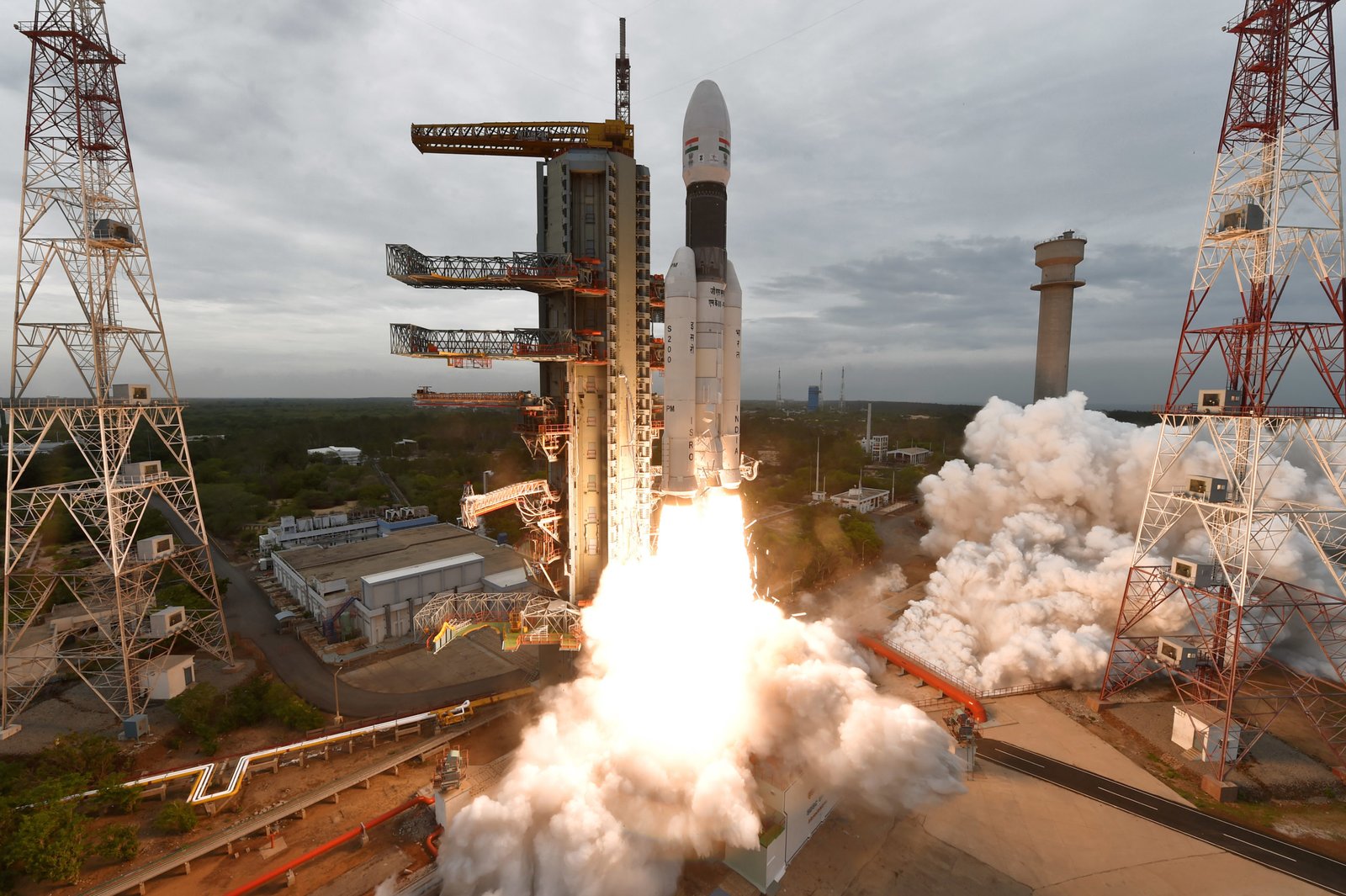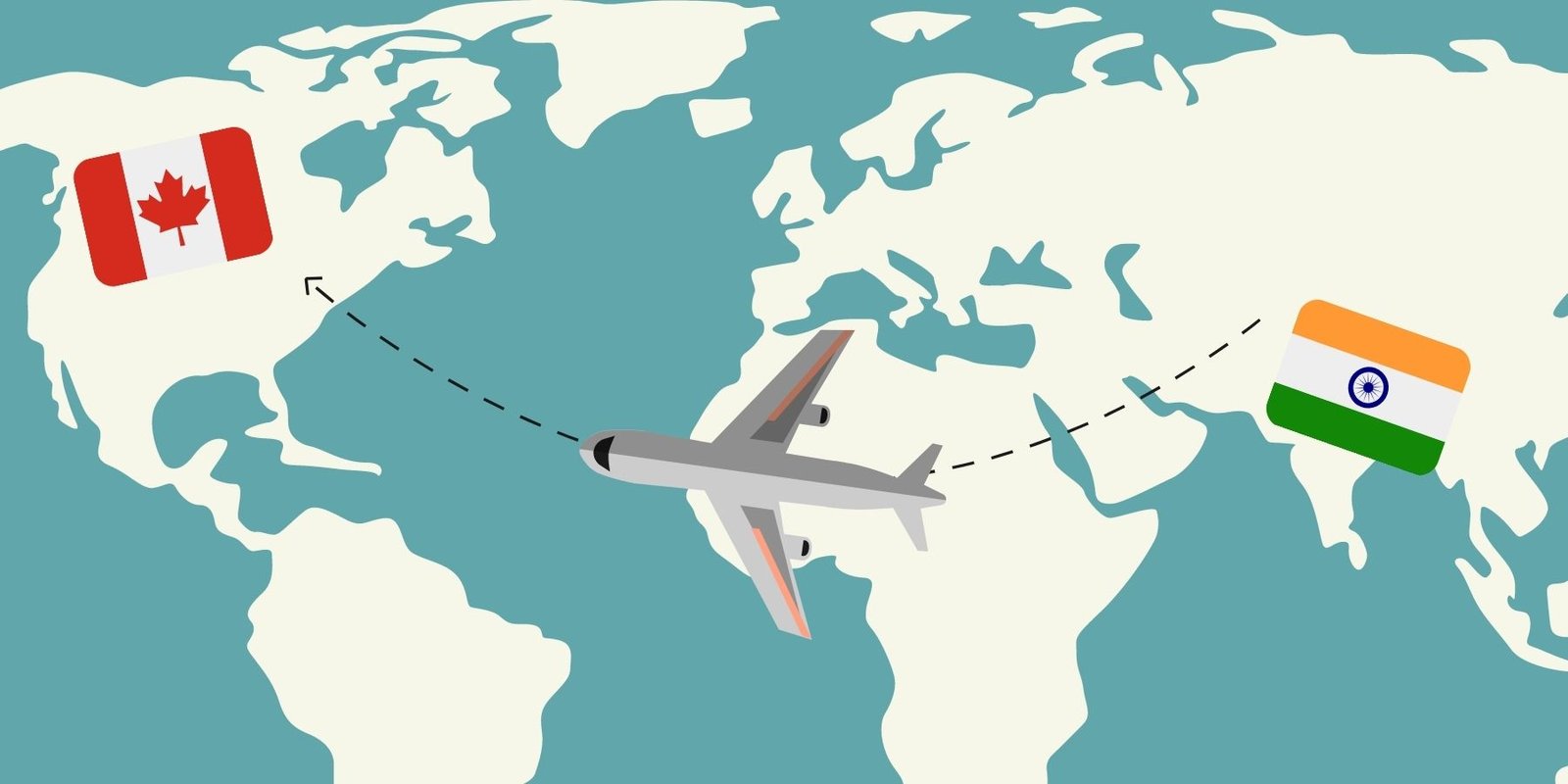Chandrayaan-2 Indian Space Research Organisation ISRO Space Mission, took off from the Satish Dhawan Space Center in Sriharikota on 22-July, 2019. After revolving around the Earth’s orbit for nearly 23 days, the spacecraft began its journey to moon on 14-August, 2019.

The Vikram lander successfully separated from Chandrayaan 2 orbiter on 2-September 2019. The Chandrayaan 2 orbiter continues to orbit the moon in its existing orbit. On 7-September 2019, the Vikram lander the Vikram Lander followed the planned descent trajectory from its orbit of 35 km to just below 2 km above the surface. The communication with the lander was lost at 2.1 km from the lunar surface.
As per the lastest update on ISRO Space Mission Chandrayaan 2, lunar lander Vikram has been located on the moon’s surface 500m away from the actual landing spot. It was seen from OHRC image and as per sources, the Lander is intact. ISRO ground station is working to establish contact. OHRC is a payload (HR Camera) of Orbiter which is 100kms away from Moon’s surface orbiting the Moon. “Yes, we have located the lander on the Lunar surface. It must have been a hard-landing,” Mr Sivan said, adding that it was unclear at this stage if the lander had been damaged.
ISRO Chandrayaan 2 Moon Mission
The Chandrayaan-2 had 13 payloads in total with eight of them in the orbiter, three payloads in Vikram and two in Pragyan. Five payloads are from India, three from Europe, two from the US and one from Bulgaria.

As per ISRO, Chandrayaan 2, which is currently orbiting around the moon, had captured images of Jackson, Mach, Korolev and Mitra craters. The names of these craters have been named after scientists, astronomers and physicists, ISRO added.
Chandrayaan-2 ISRO Space Mission was a highly complex mission, which represented a significant technological leap compared to the previous missions of ISRO, which brought together an Orbiter, Lander and Rover to explore the unexplored south pole of the Moon. Since the launch of Chandrayaan-2 on July 22, 2019, not only India but the whole world watched its progress from one phase to the next with great expectations and excitement. This was a unique mission which aimed at studying not just one area of the Moon but all the areas combining the exosphere, the surface as well as the sub-surface of the moon in a single mission.
The Orbiter has already been placed in its intended orbit around the Moon and shall enrich our understanding of the moon’s evolution and mapping of the minerals and water molecules in the Polar Regions, using its eight state-of-the-art scientific instruments. The Orbiter camera is the highest resolution camera (0.3m) in any lunar mission so far and shall provide high resolution images which will be immensely useful to the global scientific community.

The precise launch and mission management has ensured a long life of almost 7 years instead of the planned one year. The Vikram Lander followed the planned descent trajectory from its orbit of 35 km to just below 2 km above the surface. All the systems and sensors of the Lander functioned excellently until this point and proved many new technologies such as variable thrust propulsion technology used in the Lander. The success criteria was defined for each and every phase of the mission and till date 90 to 95% of the mission objectives have been accomplished and will continue contribute to Lunar science , notwithstanding the loss of communication with the Lander.
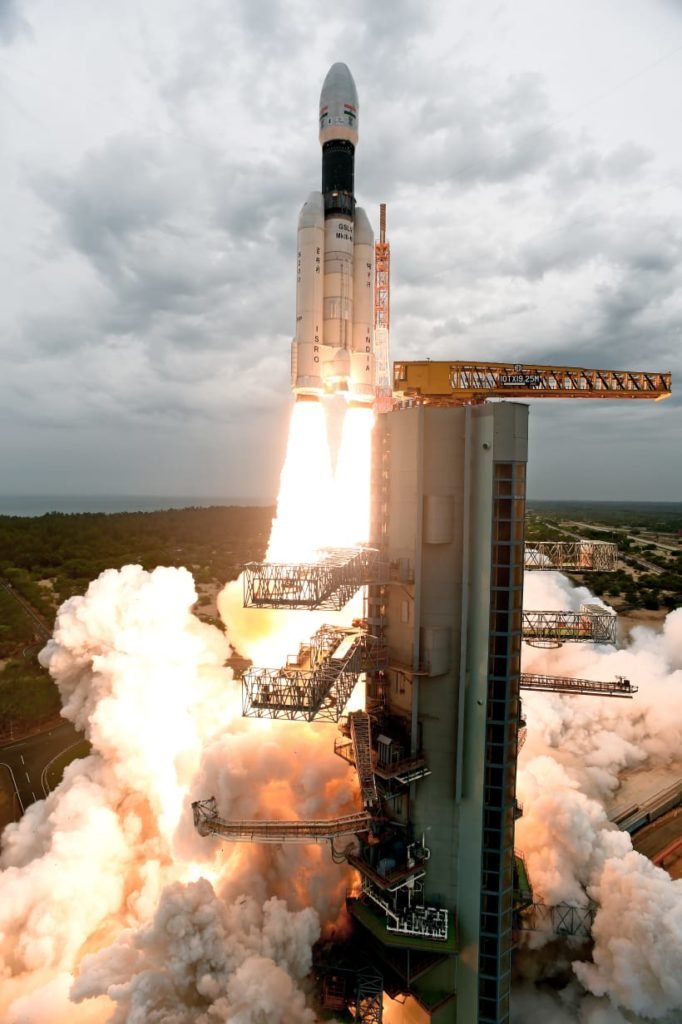
ISRO chief K. Sivan said “Vikram lander descent was as planned and normal performance was observed upto an altitude of 2.1 km. Subsequently, the communications from lander to ground station was lost. The data is being analyzed.” ISRO is working on reviving the contact with the Lander. It may take a few days.
95% of Chandrayaan-2 ISRO Space Mission is intact as orbiter flying around moon. Only 5 per cent of the mission is lost unless ISRO is able to establish contact with- Vikram the lander and Pragyan the rover. For that too ISRO and all space agencies are working together to establish the contact with the lander and the rover.
Earlier ISRO had said, Chandrayaan-2 will “boldly go where no country has ever gone before — the Moon’s South Polar region. Through this effort, the aim is to improve our understanding of the Moon — discoveries that will benefit India and humanity as a whole. These insights and experiences aimed at a paradigm shift in how lunar expeditions are approached for years to come — propelling further voyages into the farthest frontiers.”

Chandrayaan 2, the first expedition by ISRO to attempt a soft landing on the lunar surface with home-grown technology, is India’s third mission to a celestial body after Chandryaan 1 mission in 2008 and the Mars Orbiter Mission in 2013.
While the contact with Vikram lander is lost, the orbiter can still take pictures of the moon and send it to the ISRO over the next year. If the landing was executed successfully as planned, India would have become the fourth country — after the United States, Russia and China — to soft land on the moon.
PM Narendra Modi Addressed ISRO Scientists
PM Narendra Modi interacted with ISRO scientists after Moon lander loses contact.
In his nearly 30-minute long address to the ISRO scientists, PM Modi said “resilience and tenacity are central to India’s ethos”.
“In our glorious history, we have faced moments that may have slowed us but they have never crushed our spirit. We have bounced back again and gone on to do spectacular things. This is why our civilization stands tall,” he said.
“As important as the final result is the journey and the effort. I can proudly say that the effort was worth it and so was the journey. Our team worked hard, travelled far and those teachings will always remain with us. The learnings from today will make us stronger and better,” PM Modi added.
Here are some of his quotes from 30 minutes speech to ISRO scientists:
“Your dreams and resolves are stronger than mine”
“Experiments are never enough for science”
“With the encyclopedia of success, some hurdles cannot put its flight out of trajectory”
“There’s no failure in science, there are only experiments”
“Every difficulty makes us learn something new and defines are future success”
“I am proud of the efforts”
“There will be a new dawn and a brighter tomorrow”
“The effort was worth it and so was the journey. Our team worked hard”
“We have bounced back time and again and have done spectacular things”
“You ventured into a place where no one has ever been before”
“You have made an incredible contribution to national success”
“India is with you”
PM Modi hugged the ISRO chief outside the space centre after the speech
PM Modi’s gesture has been appreciated by several political leaders.
Modi in another rally said there were three kinds of people who strive to attain goals — those who do not even start due to fear of failure, those who start but run away upon facing challenges and those who strive continuously despite big challenges.
Modi said it was a historic achievement that the Orbiter, which was a significant part of the Chandrayaan 2 mission, has been placed successfully in the lunar orbit.
ISRO Space Mission: Chandrayaan 2: Interesting Facts About South Pole Region of Moon
What are the scientific objectives of Chandrayaan 2? Why explore the Lunar South Pole?
Moon provides the best linkage to Earth’s early history. It offers an undisturbed historical record of the inner Solar system environment. Though there are a few mature models, the origin of Moon still needs further explanations. Extensive mapping of lunar surface to study variations in lunar surface composition is essential to trace back the origin and evolution of the Moon. Evidence for water molecules discovered by Chandrayaan-1, requires further studies on the extent of water molecule distribution on the surface, below the surface and in the tenuous lunar exosphere to address the origin of water on Moon.

The lunar South Pole is especially interesting because of the lunar surface area here that remains in shadow is much larger than that at the North Pole. There is a possibility of the presence of water in permanently shadowed areas around it. In addition, South Pole region has craters that are cold traps and contain a fossil record of the early Solar System.
Chandrayaan-2 had plans to soft land the lander -Vikram and rover- Pragyan in a high plain between two craters, Manzinus C and Simpelius N, at a latitude of about 70° south if the landing was successful.
Right now the communication is lost, we will try to establish a link for the next 14 days: Sivan
Worldwide Support for ISRO
NASA from its Twitter handle @NASA tweeted, “Space is hard. We commend @ISRO’s attempt to land their #Chandrayaan2 mission on the Moon’s South Pole. You have inspired us with your journey and look forward to future opportunities to explore our solar system together.”
UAE Space Agency with Twitter handle @uaespaceagency tweeted, “The #UAESpaceAgency assure their full support to the @isro following the loss of contact with their spacecraft, Chandrayaan-2 which had to land on the moon. #India proved to be a strategic player in the #space sector & a partner in its development & achievements”
Russian Space agency, Glavkosmos which is a daughter company of ROSCOSMOS tweeted with its Twitter handle @glavkosmosJSC, “Stay strong! We are proud of @isro team’s work under the inspirational leadership of @PMOIndia @narendramodi and with an outstanding national support. Together we will strive for more! #SpaceIsHard”
Bhutan PM Lotay Tshering said, “We are proud of India and its scientists today. Chandrayaan 2 saw some challenges last minute but courage and hard work you have shown are historical. Knowing Prime Minister Narendra Modi. I have no doubt he and his Isro team will make it happen one day”
However with worldwide support pouring in, the biggest Blot in the name of Space technology, India’s Arch rival, Federal Minister for Science & Technology Government of Pakistan as expected losing all moral decency tweeted, “Awwwww….. Jo kaam ata nai panga nai leitay na…Dear Endia (Meaning, you should not attempt to do what you do not know how to do”
It evoked a sharp criticism on social media worldwide. One twitter user said, “Dear Pakistani, instead of trolling #ISRO and making fun of its 99% success rate, look at your own space agency SPARCO. Even Twitter found it worthless and never verified the handle.”
Another Twitter user responded, “You are feeling Jealous. India can spend Money on Chandrayaan, that is still in Moon Orbit. But Bhikhario ko Bheekh nahi Denge!!! (We shall not give alms to Beggar Pakistanis)”
David Vance with Twitter handle @DVATW tweeted, India sends a vehicle to the Moon. Pakistan sends a goat up a mountain. He further tweeted, “Oh dear. I seem to have triggered outrage from some #Pakistani tweeters for pointing out that whilst India sends spacecraft to the Moon, Pakistan sends some citizens home with camel urine as a drink. I thin i know which side is winning.”
Technology was designed and made almost entirely in India
Most of the technology employed in the mission is home-grown, with the orbiter, lander and rover having been designed and made almost entirely in India. Even the scientists at IIT Kanpur have made a significant contribution to this.
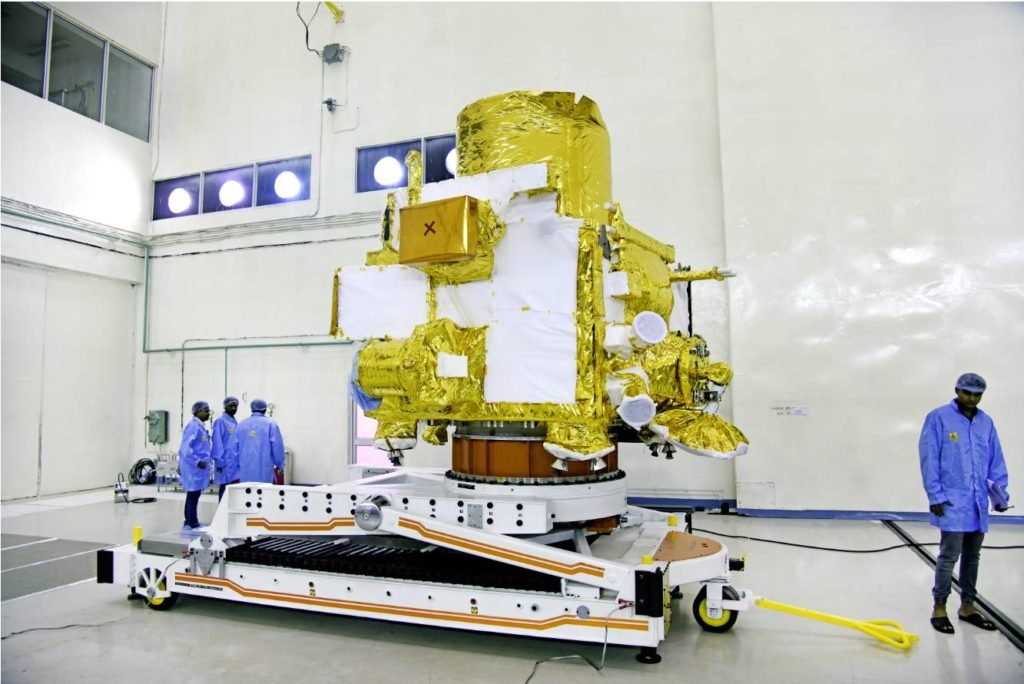
A team of scientists at IIT-K including Professors KA Venkatesh and Ashish Datta had developed a piece of motion technology, which would have helped the rover manoeuvre on the surface of the moon and aid in landing if the landing was successful.
According to Professor Ashish Datta of the Mechanical Engineering Department, “It took almost an entire year to develop the software which was based on an algorithm system. The software has for the first time been completely developed in our country and now we stand among those nations who are making the software for lunar rover.”
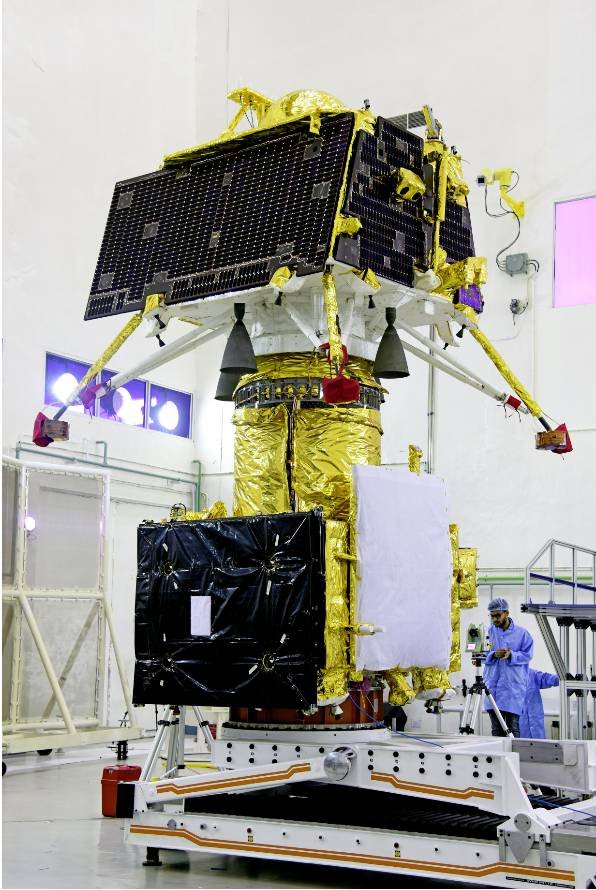
The Chandrayaan-2 rover, which is fitted with the software developed by IIT-K scientists, could have traced water and other minerals on the lunar surface and sent pictures for research and examination if the landing was successful.
Chandrayaan-1 is credited with having discovered water on the surface of the moon.
Indian Flag on Moon
On Saturday, November 15, 2008, At 8:34 pm Indian time Friday night (1504 UTC), India became the fourth country to land its flag on the Moon.
The unmanned lunar orbiter Chandrayaan-1 ejected its Moon Impact Probe (MIP), which hurtled across the surface of the Moon at 1.5 kilometres per second (3000 miles per hour), and successfully crash landed near the Moon’s south pole. Besides carrying three important scientific instruments, the lunar probe also carried the image of the Indian national flag, painted on all sides.
With the landing in 2008, India became both the fourth country to place a flag on the Moon and the fifth group to send a spacecraft to the Moon.
Second time India placed its flag was on 07-September 2019. The lunar spacecraft, with an orbiter, lander Vikram and rover Pragyan, have taken India’s flag on the moon’s surface. Though the communication is lost, but Indian Flag reached Moon Surface.
“The rover has six wheels (three each on both sides), the back two wheels- one has Ashoka Chakra on it and the other has ISRO emblem. Also, the ramp of the lander on which rover will come out and land on moon has Indian flag on it,” Sivan had earlier said.
Other Planned ISRO Missions on cards
Chandrayaan-2 is not the only big-ticket mission that ISRO is working on. Here are a few of the ISRO Space Mission Programs, India is currently working on.
ISRO Space Mission: Cartosat-3 (2019)
The Indian Space Research Organisation is all set to launch its third variant of the cartography satellite (CartoSat). The Cartosat-3 is the most advanced satellite and of all the variants ISRO has made this far, with defence capabilities in addition to high-resolution earth observation abilities.
CartoSat-3 will be launching soon, said Chairperson of ISRO Dr K Sivan, in an interview with IANS. “The next launch will be cartography satellite Cartosat-3. The launch will be towards the end of October or early November this year.”
Sivan added that the satellite will be launched by the Polar Satellite Launch Vehicle (PSLV) rocket.
Cartosat-3 is the third series of Earth observational satellites built by ISRO and has advanced remote sensing tools that will be helpful with defence. It will be a leap of advancement over CartoSAT-2, with far better spatial range (of view) and resolution (of up to 0.25 metre, or 25 centimetres)
“We have already taken a review to talk about the next mission, the Cartosat 3 mission. We are going to have a series of Cartosat missions this year,” said ISRO chairperson K Sivan, after the successful launch of Chandrayaan-2. Cartosat is a series of Earth observation satellites.
ISRO Space Mission: Aditya-L1 Mission to Sun Orbit (2019-2020)
The Aditya-1 mission was conceived as a 400kg class satellite carrying one payload, the Visible Emission Line Coronagraph (VELC) and was planned to launch in a 800 km low earth orbit. A Satellite placed in the halo orbit around the Lagrangian point 1 (L1) of the Sun-Earth system has the major advantage of continuously viewing the Sun without any occultation/ eclipses. Therefore, the Aditya-1 mission has now been revised to “Aditya-L1 mission” and will be inserted in a halo orbit around the L1, which is 1.5 million km from the Earth. The satellite carries additional six payloads with enhanced science scope and objectives.
The project is approved and the satellite will be launched during 2019 – 2020 timeframe by PSLV-XL from Sriharikota.
Aditya-1 was meant to observe only the solar corona. The outer layers of the Sun, extending to thousands of km above the disc (photosphere) is termed as the corona. It has a temperature of more than a million degree Kelvin which is much higher than the solar disc temperature of around 6000K. How the corona gets heated to such high temperatures is still an unanswered question in solar physics.

Aditya-L1 with additional experiments can now provide observations of Sun’s Photosphere (soft and hard X-ray), Chromosphere (UV) and corona (Visible and NIR). In addition, particle payloads will study the particle flux emanating from the Sun and reaching the L1 orbit, and the magnetometer payload will measure the variation in magnetic field strength at the halo orbit around L1. These payloads have to be placed outside the interference from the Earth’s magnetic field and could not have been useful in the low earth orbit..
ISRO Space Mission: Gaganyaan mission (2021-2022)
In his 2018 Independence Day address, Prime Minister’s Narendra Modi announced that India will attempt to send astronauts to space on a spacecraft called the ‘Gaganyaan’ by 2022. The mission will make India only the fourth nation in the world to accomplish the feat if successful, he added. At Rs 10,000 crore, the Gaganyaan mission is India’s biggest space mission so far.
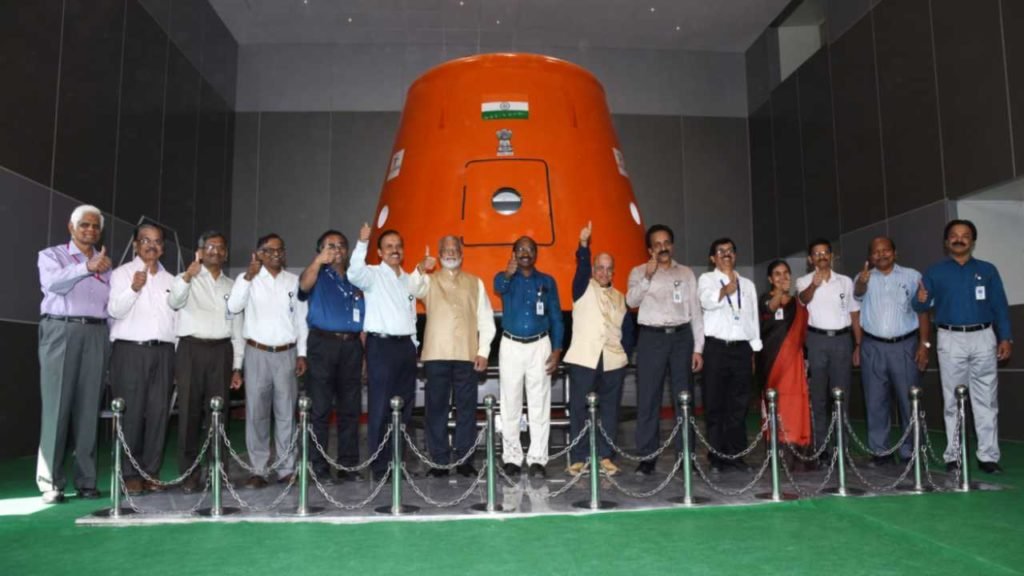
On JUN 26, 2019 K Kasturirangan, former ISRO Chairman, in the presence of K Sivan, ISRO Chairman and Secretary, Department of Space, inaugurated the Human Space Flight Centre (HSFC) Wednesday at ISRO Headquarter campus in Bengaluru, the space agency said on its website. A full-scale model of Gaganyaans crew module was also unveiled during the event.
The Gaganyaan’s crew module to house astronauts, its life support systems to keep them alive in space, and the spacecraft’s environmental-control systems have already been developed, and are being tested at a new facility opened by ISRO for human spaceflight missions. The mission is “highest priority” for ISRO in 2019, the space agency announced, with plans to have the first unmanned tests for the mission in December 2020 and second in July 2021. If these tests are successful, the manned mission will happen as planned in December 2021.
ISRO Space Mission: Mangalyaan-2 (Mars Orbiter Mission-2) (2022-2023)
India’s second mission to Mars, the Mars Orbiter-2, is another planned mission by the Indian Space Research Organisation (ISRO) between 2022 and 2023. The Mangalyaan-2 orbiter will use aerobraking to lower its initial apoapsis and enter into an orbit more suitable for observations.
India’s ISRO and French CNES space agencies were intended as partners building the MOM-2 module by 2020, but by April 2018, France was not yet involved in the mission. In a sign of encouragement, the Indian government funded the MOM-2 mission in its 2017 budget proposal, leaving ISRO mulling over whether the best path is a MOM mission with an orbiter, lander and rover will be feasible or an orbiter alone with instruments more sophisticated than those on MOM-1 would be the way to go.
ISRO Space Mission: Chandrayaan-3 mission (2020-2021)
While the second mission in the Chandrayaan (India’s lunar exploration) programme is still underway, K Sivan already announced that the third mission in the series will also be carried out in the coming decade. The Chandrayaan program was always intended as a multi-mission space programme.
“The Moon is a good candidate as a staging point for carrying out our deep space human spaceflight missions, and Chandrayaan-2 will assess the suitability of the Moon for such activities,” Chairman K Sivan said in an interview to Current Science.
ISRO will also soon initiate a space robotics programme to look at the possibility of an Indian robot on the Moon, he added. With the first mission in the program featuring an Orbiter and the second featuring a soft lander and rover, it sure is interesting to consider what India’s third lunar mission might bring to the table. Could Chandrayaan-3 be the mission to put an Indian robot on the Moon?
Shukrayaan mission to Venus (2023-2025)
Our neighbouring planet Venus is often described as Earth’s ‘twin sister’ due to similarities in their sizes, densities, composition and gravity. Some theories suggest both planets share a common origin, forming at the same time from the same condensing swirl of gas and dust all those 4.5 billion years ago. Being 30 percent closer to the Sun than the Earth, Venus has a much higher exposure to solar radiation, effects of solar flares and other solar phenomena, which makes it an object of interest for ISRO to study.
ISRO intends to send an orbiter mission to study the atmosphere of Venus, which is made up primarily of carbon dioxide. The Shukrayaan mission will study the dense, hot atmosphere of Venus and the planet’s surface using a probe.
The satellite configuration and payloads on Shukrayaan-1 are yet to be finalized. But the science objectives that will feed the design of the spacecraft are The “super-rotation” of the Venusian atmosphere and how it interacts with solar radiation and solar wind are also among the mission’s science objectives, according to an ISRO release.
ISRO Space Mission: EXPOSat Planetary exploration (2020-2021)
The EXPOSat mission appears to be a follow-up to the AstroSAT mission, ISRO’s multi-wavelength X-ray astronomy observatory studying X-ray sources in the universe. Considering the great success of AstroSAT, the EXPOSat mission will further explore X-rays in the universe — specifically, the polarisation of bright X-ray sources in our universe.
These objects could be neutron stars, supernova remnants, pulsars and regions around black holes that could give scientists information about the electromagnetic nature of space radiation. Understanding space radiation better could be used to protect spacecraft and astronauts in the future, but also pave the way for space technology to better understand happenings in the universe.
These, K Sivan said at the briefing, are only some of the planned interplanetary missions ISRO has in mind for the decade to come.
ISRO Space Mission: India’s Space Station (2023-2024)
Another plan in the pipeline is a space station that will be built by India. Currently, the International Space Station is the only functioning one but it is supposed to be winding up by 2028. The proposed station will weigh 15-20 tonnes and will be able to host people for 15-20 days. It will be used to conduct microgravity tests said Kailasavadivoo Sivan the chairperson of ISRO.
The space station according to Sivan is a logical extension of the RS 10,000 crore Gaganyaan mission that will be sending human beings to space in 2022.
The timeline for the mission is five to seven years which should be a challenge but ISRO has been developing the necessary technologies like the space docking technology that should keep it on track said Ajay Lele, a senior fellow at the Institute for Defence Studies and Analyses.
Lunar Missions from Different Nations to Moon (Success Rate discussed)
The success ratio of lunar missions undertaken in the last six decades is 60 per cent, according to US space agency NASA’s ‘Moon Fact Sheet’.
Of the 109 lunar missions during the period, 61 were successful and 48 had failed, it stated. In the early hours of September 7, Indian space agency ISRO’s plan to soft land Chandrayaan-2’s Vikram module on the lunar surface as the communication was lost with the lander.
The lander lost communication with ground stations during its final descent. ISRO officials said, adding that the orbiter of Chandrayaan-2 — second lunar mission — remains heathy and safe.
This year, Israel, too, launched its lunar mission Beresheet in February 2018 but it crash landed in April.
The first mission to the Moon was planned by the US in August 17, 1958, but the launch of Pioneer 0 was unsuccessful.
The first successful mission to the Moon was Luna 1 by the USSR on January 4, 1959. It was also the first ‘Moon flyby’ mission. The success had come only in the sixth mission.
In a span of a little more than a year, from August 1958 to November 1959, the US and the USSR launched 14 missions.
Of these, only three — Luna 1, Luna 2 and Luna 3 — were successful. All were launched by the USSR.
The Ranger 7 mission launched in July 1964 by the US was the first to take close-up pictures of the Moon.
The first lunar soft landing and first pictures from the lunar surface came from Luna 9, launched by the USSR in January 1966.
Five months later, in May 1966, the US successfully launched a similar mission Surveyor-1.
The Apollo 11 mission was the landmark mission through which humans first stepped on to the lunar surface. The three-crewed mission was headed by Neil Armstrong.
Japan launched Hiten, an orbiter mission in January 1990. This was also Japan’s first Moon mission. After that, in September 2007, Japan launched Selene, another orbiter mission.
There were six lunar missions from 2000-2009 — Europe (Smart-1), Japan (Selene), China (Chang’e 1), India (Chandrayaan-1) and the US (Lunar Reconnaissance Orbiter and LCCROSS).
From 2009-2019, ten missions have been launched of which five have been sent by India, three by the US, and one each by India and Israel.
Since 1990, the US, Japan, India, the European Union, China and Israel launched 19 lunar missions.
Follow us at:-
Twitter Handle: @newscomworld
Instagram Handle: @newscomworld
Parler Handle: @newscommuniquecom
Subscribe our : YouTube Channel https://www.youtube.com/channel/UCnKJQ3gFsRVWpvdjnntQoAA
Like our Facebook Page https://m.facebook.com/News-Communiquecom-103788531007438/
1,116 total views


